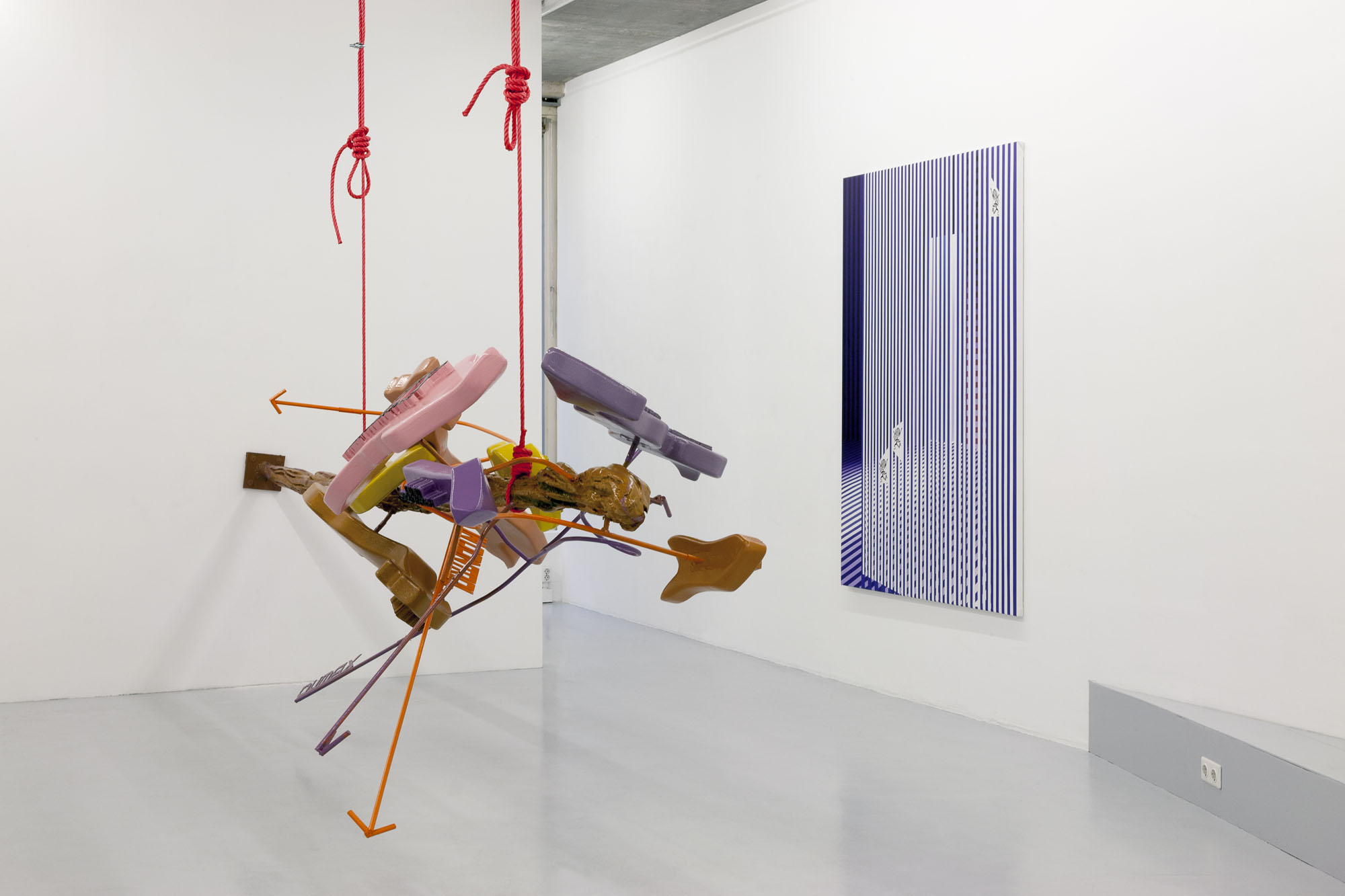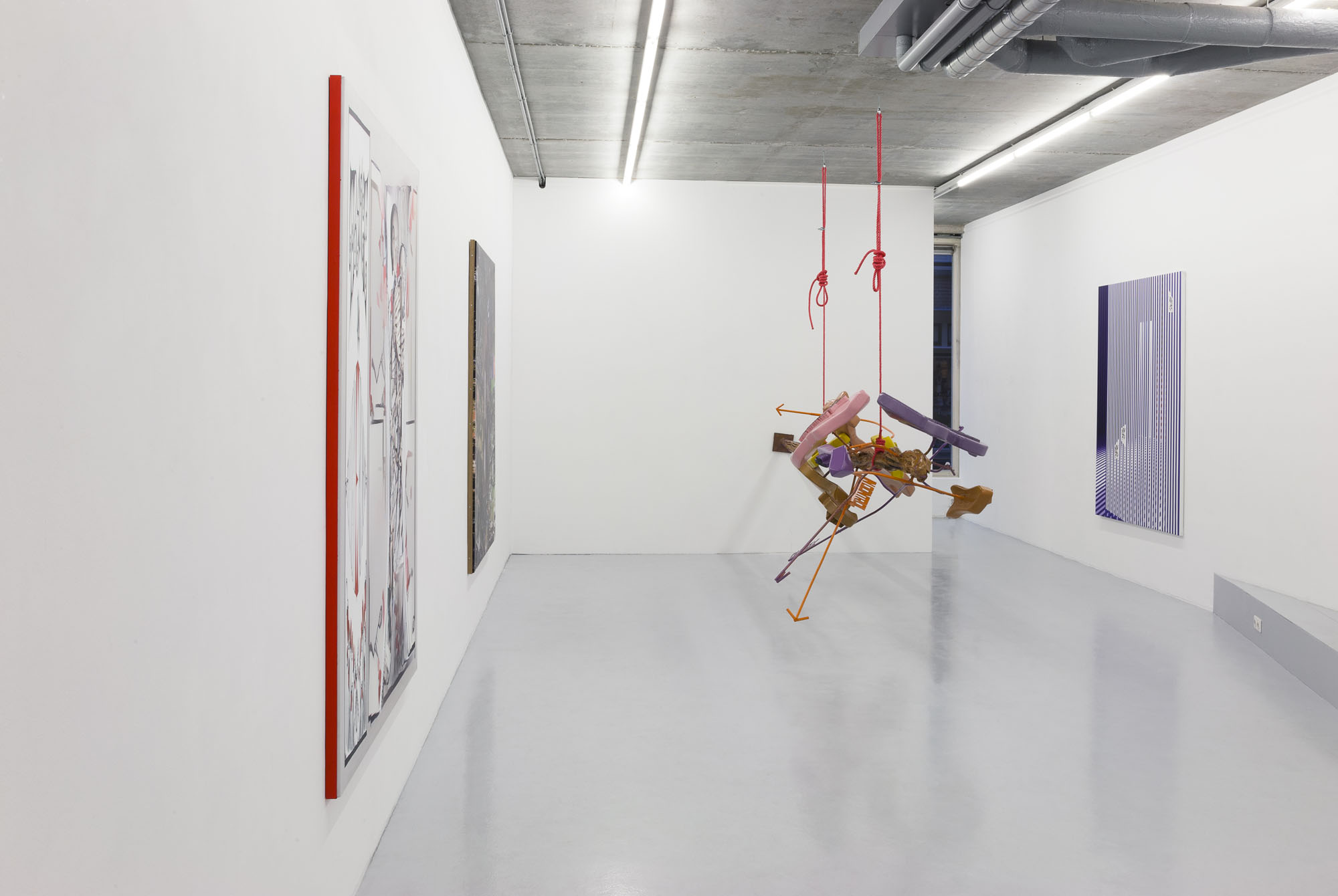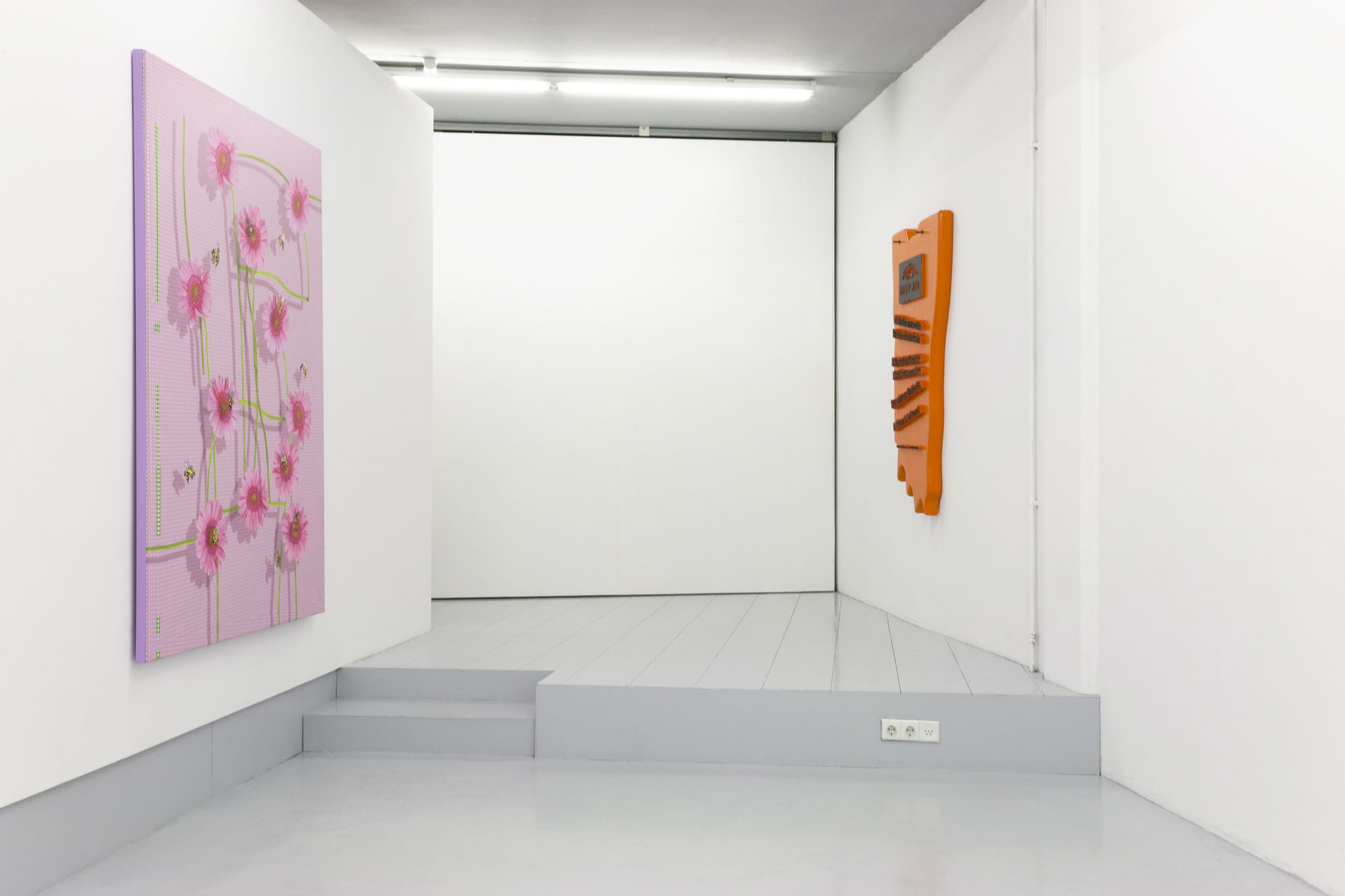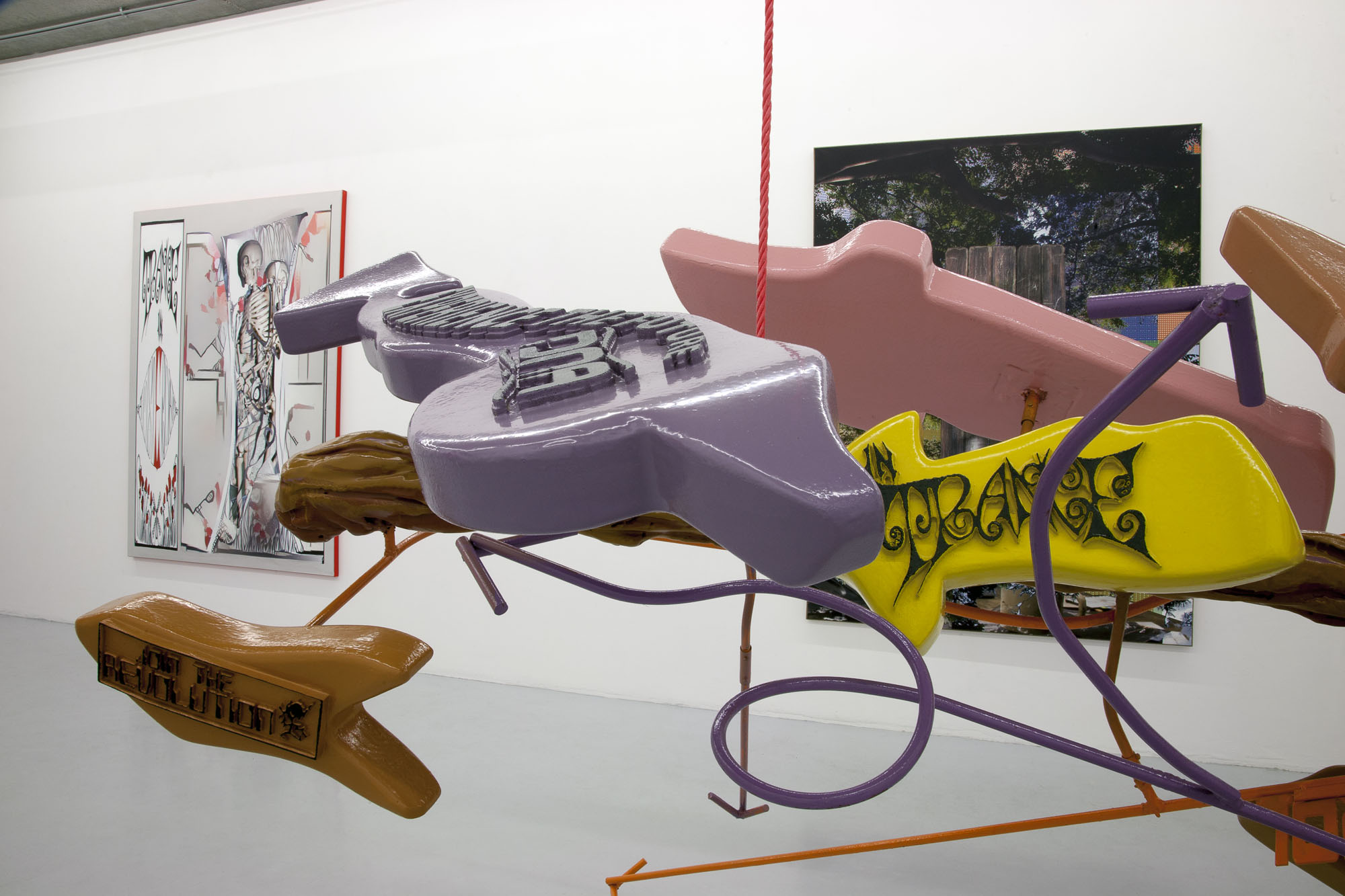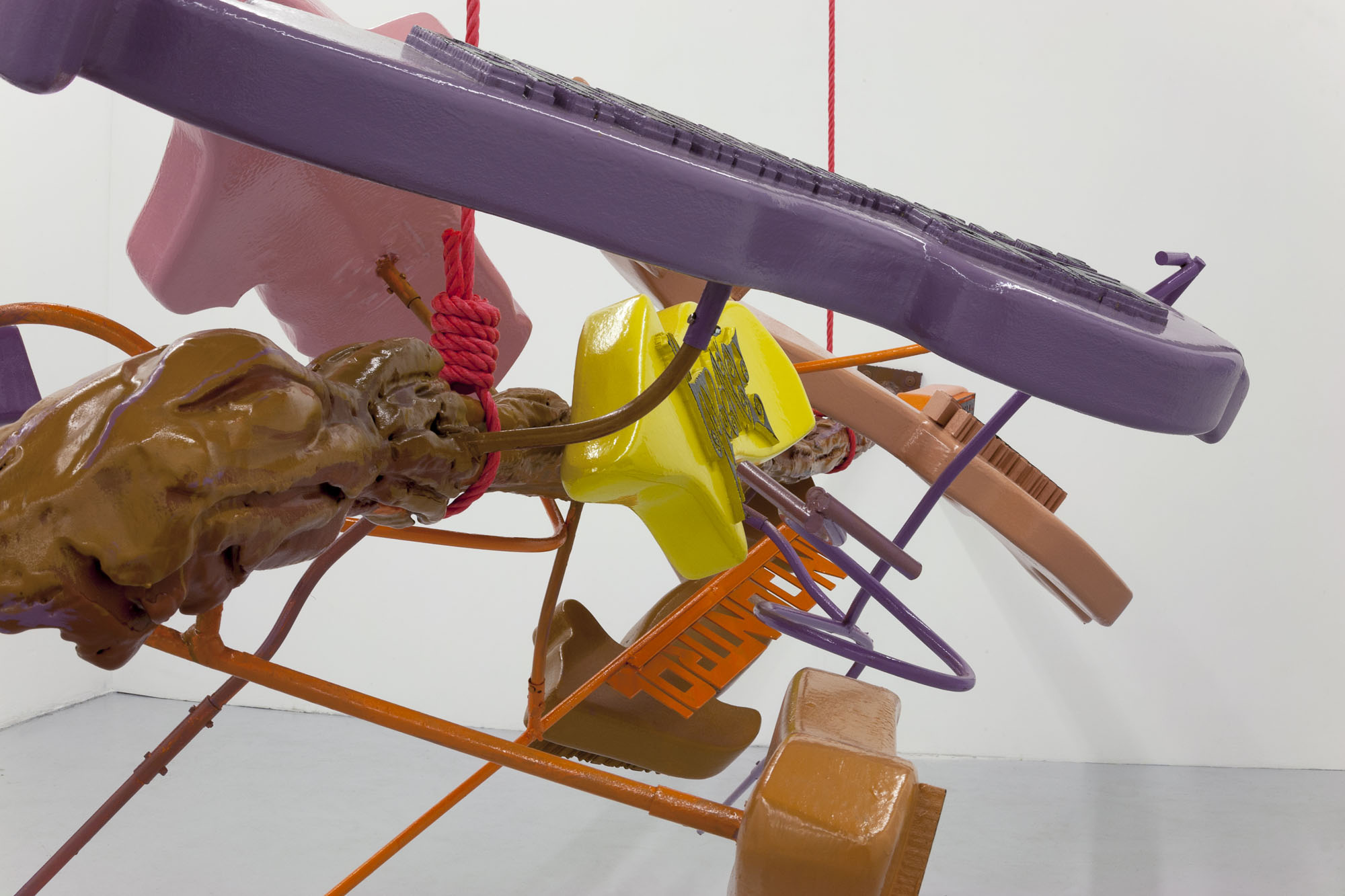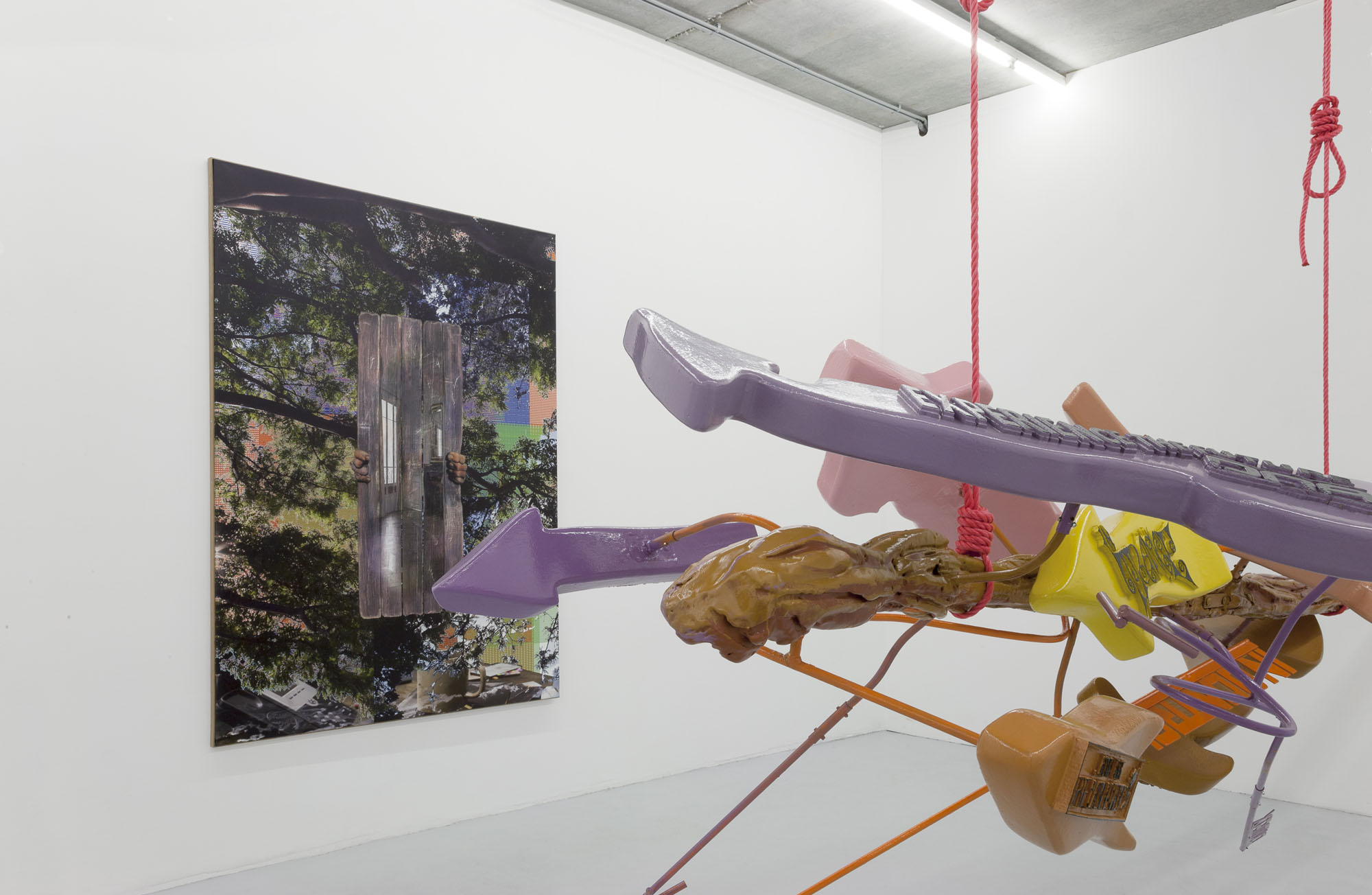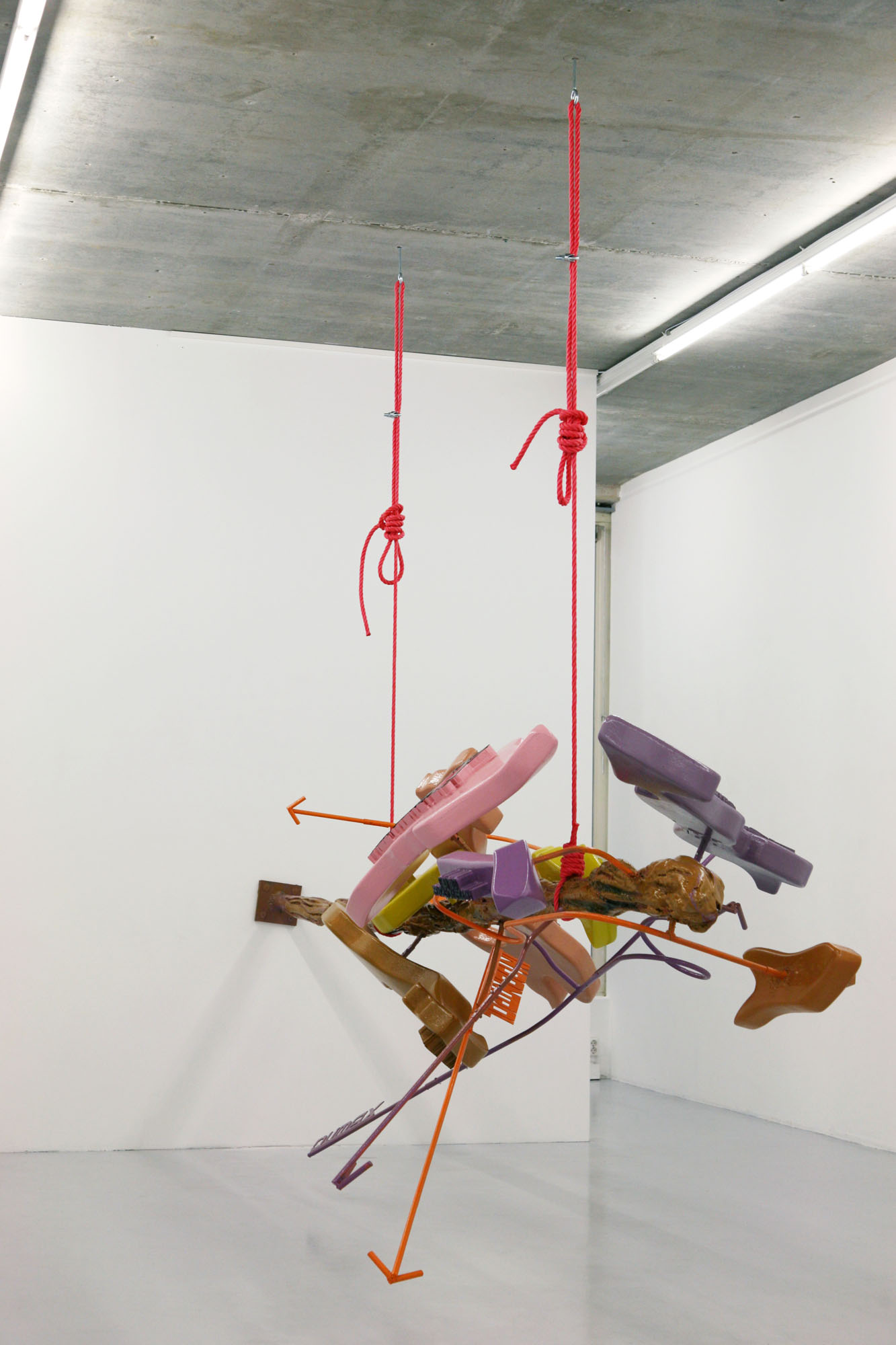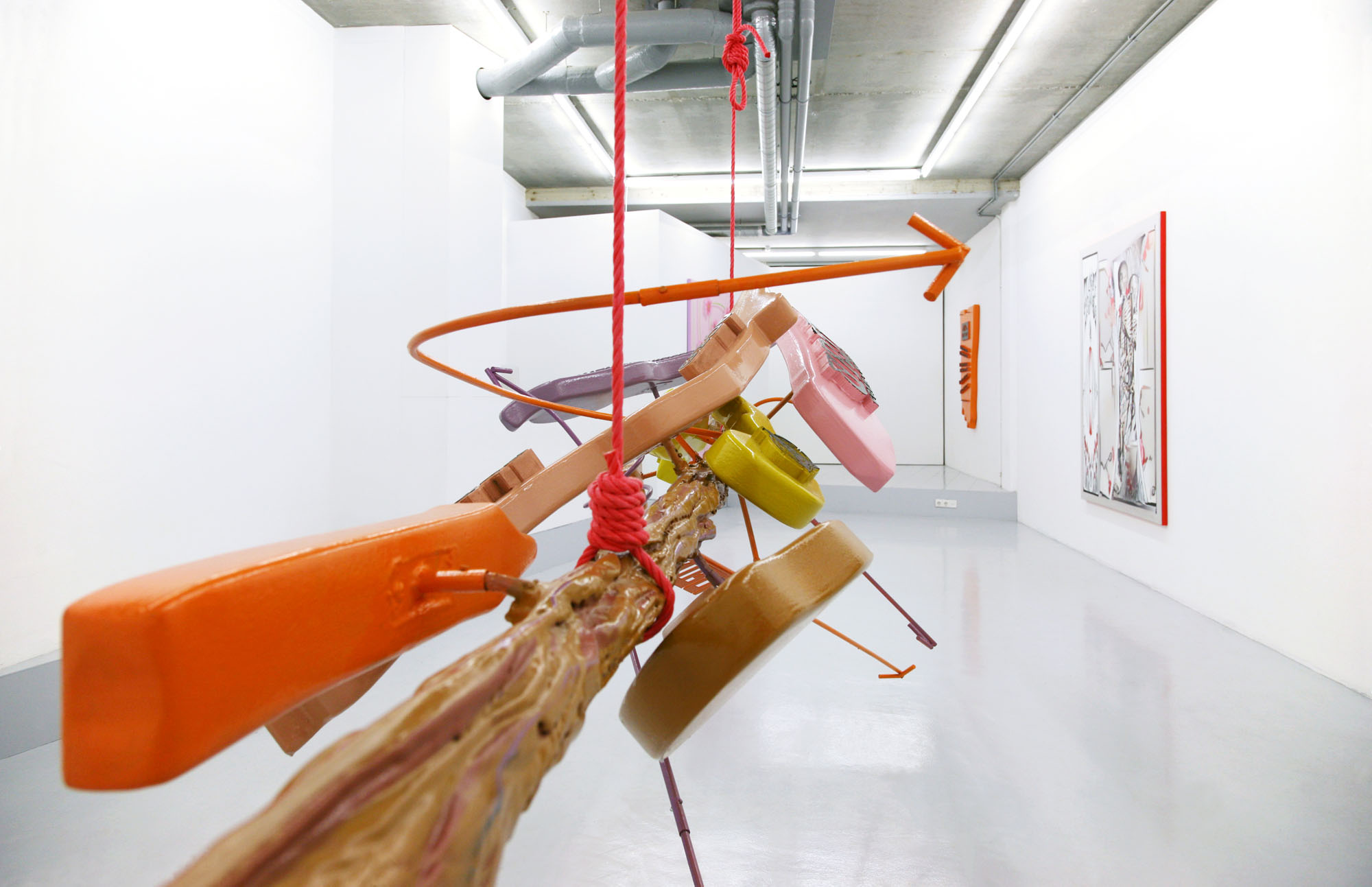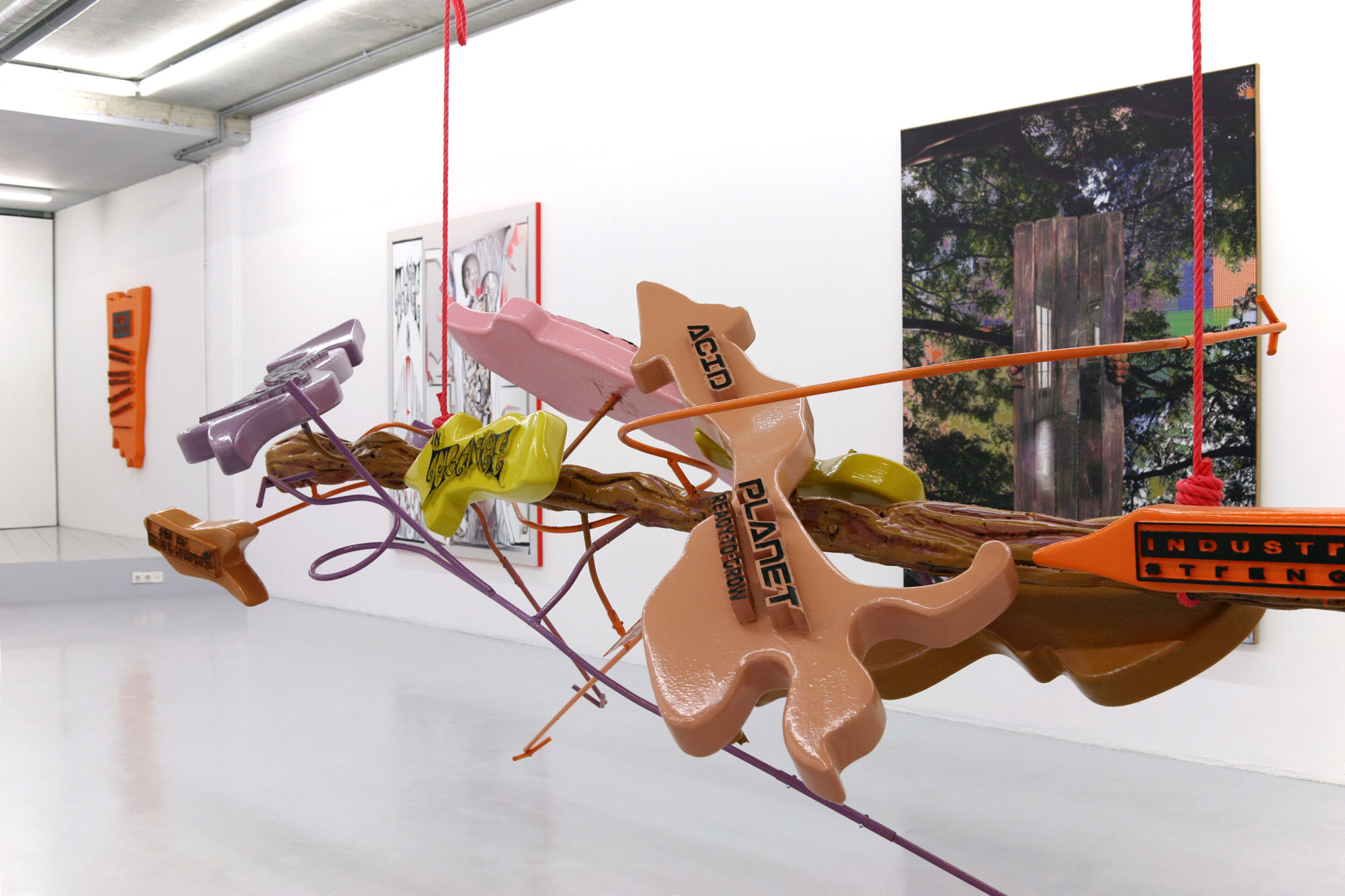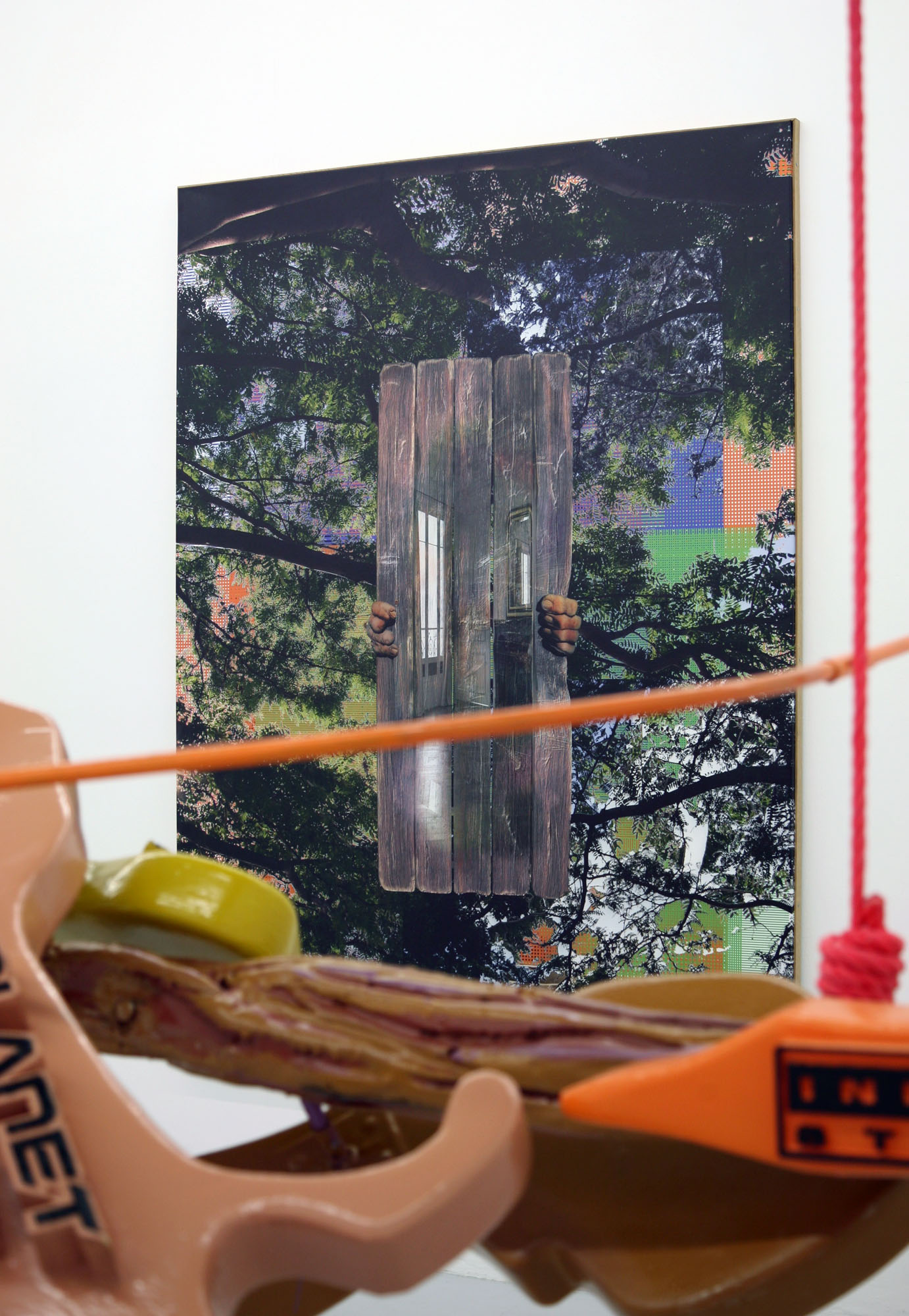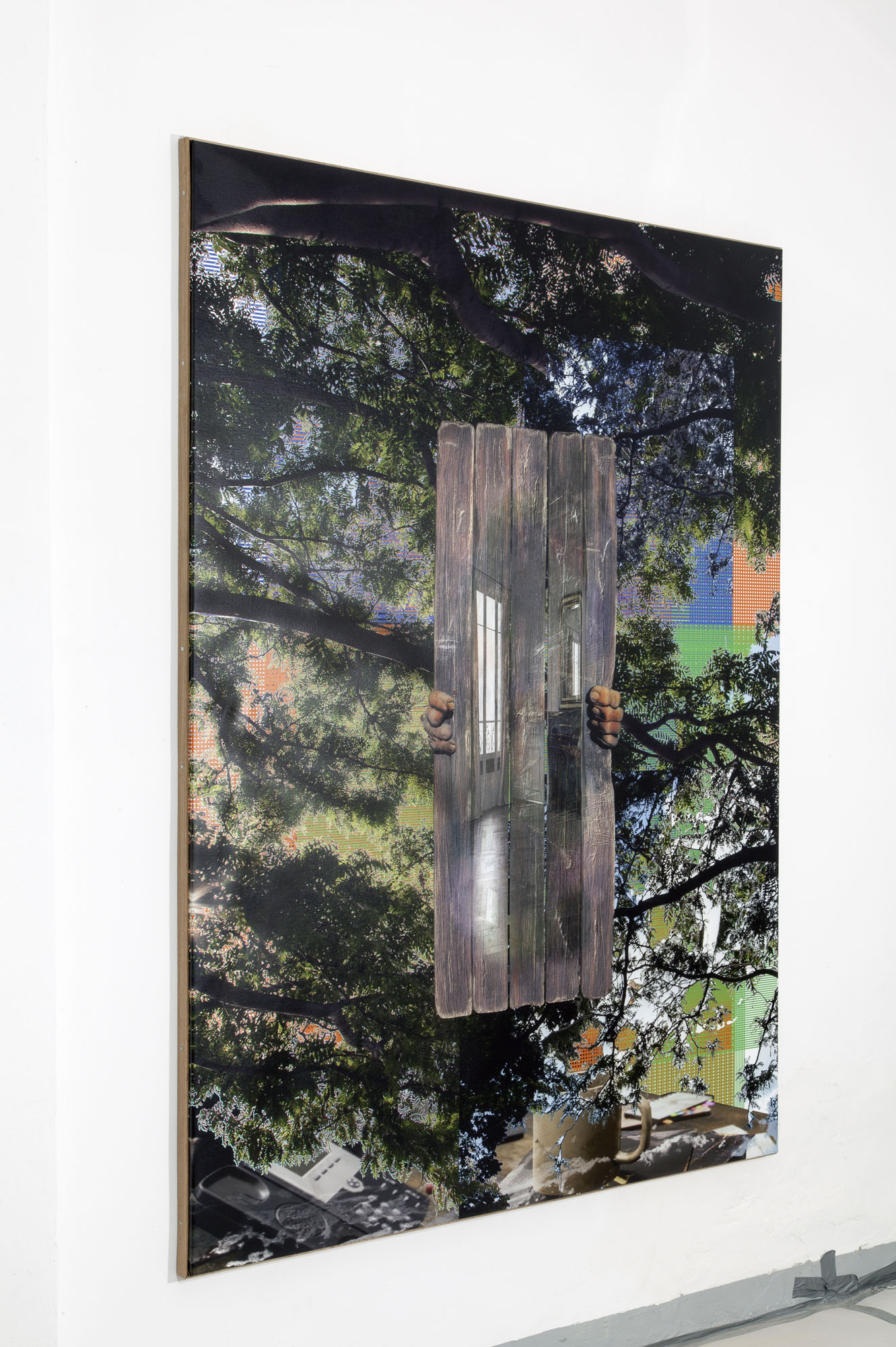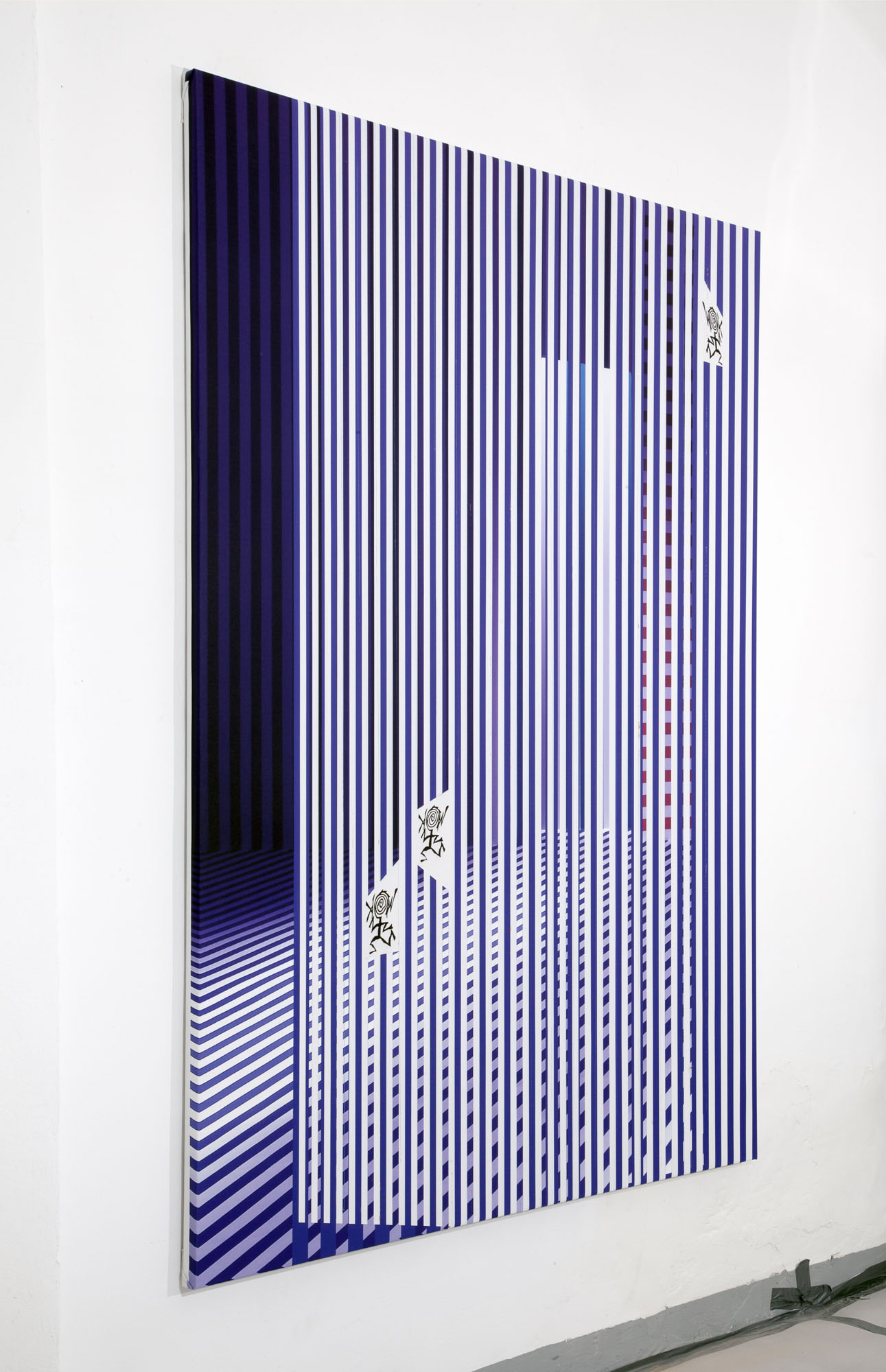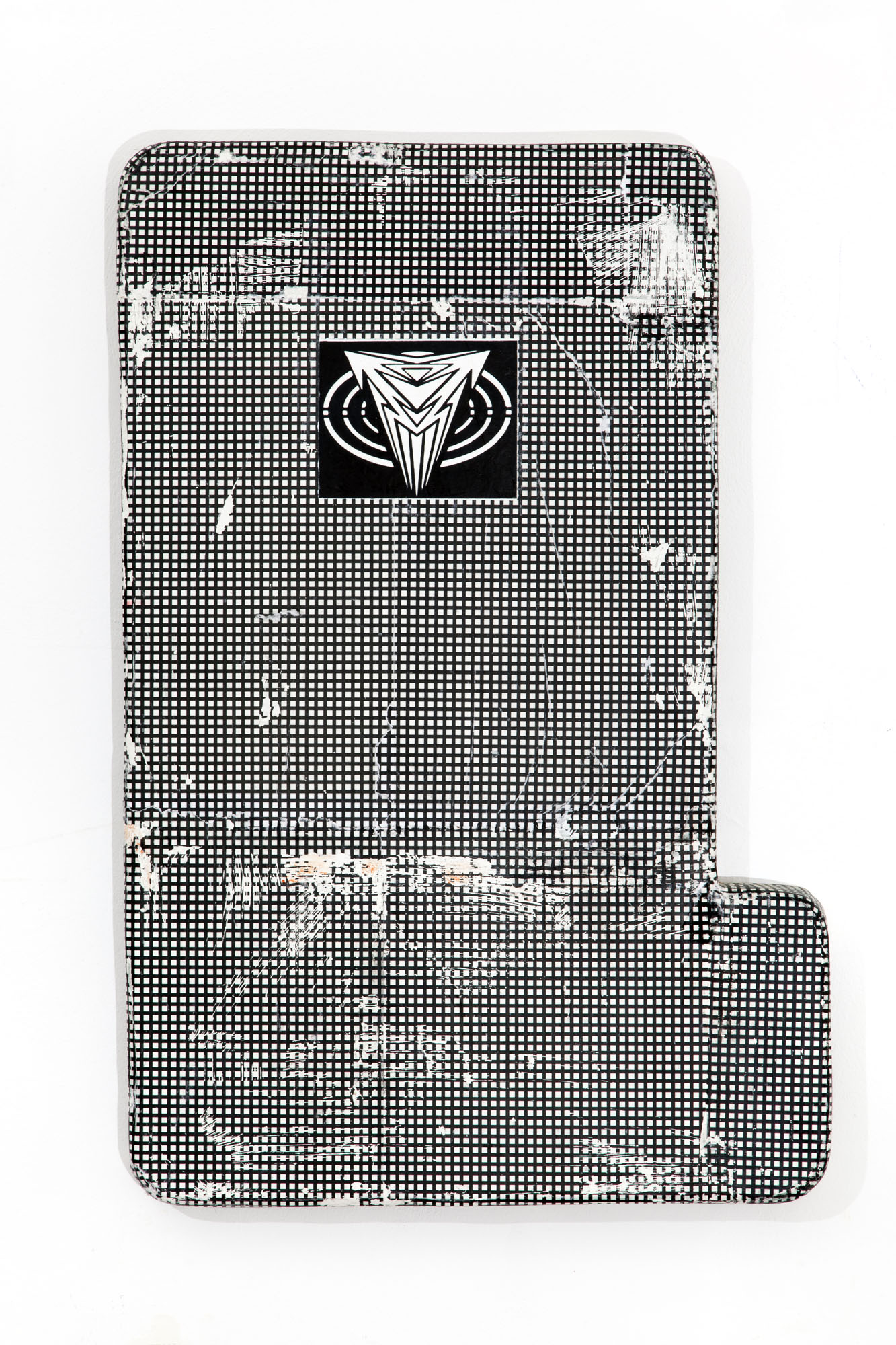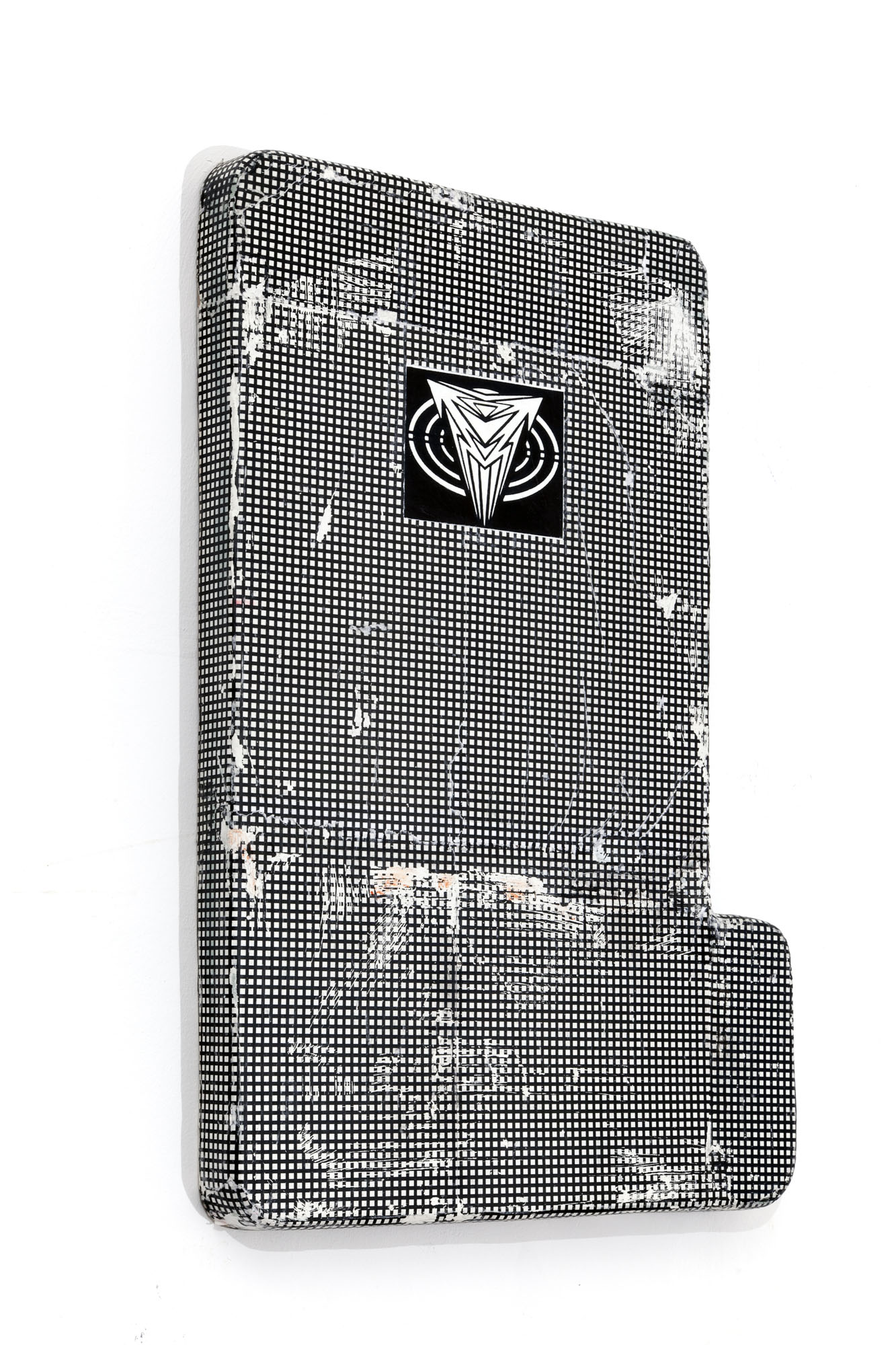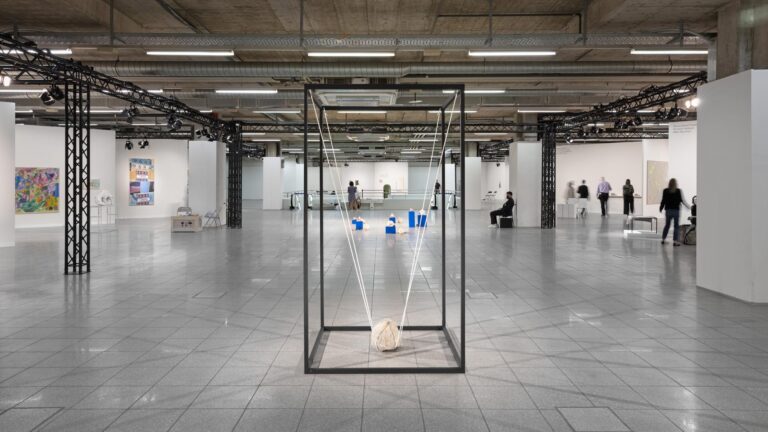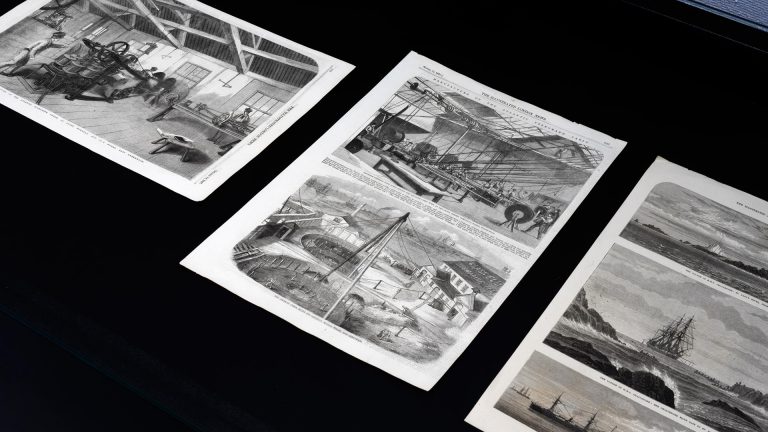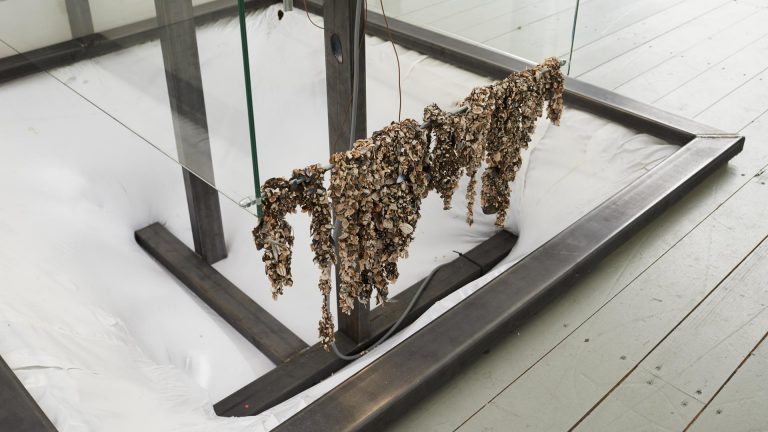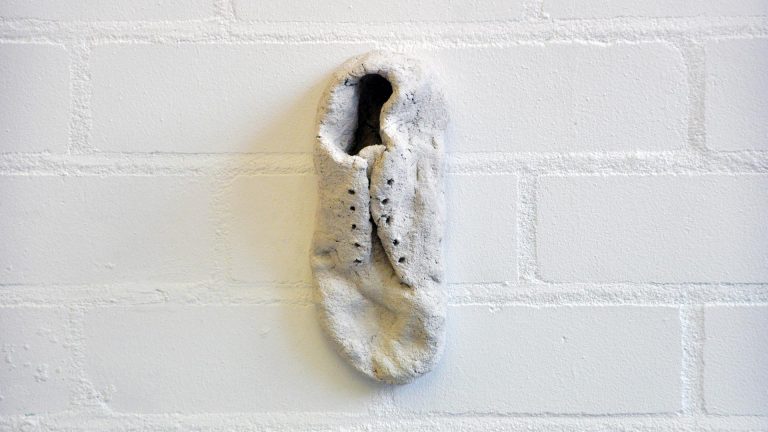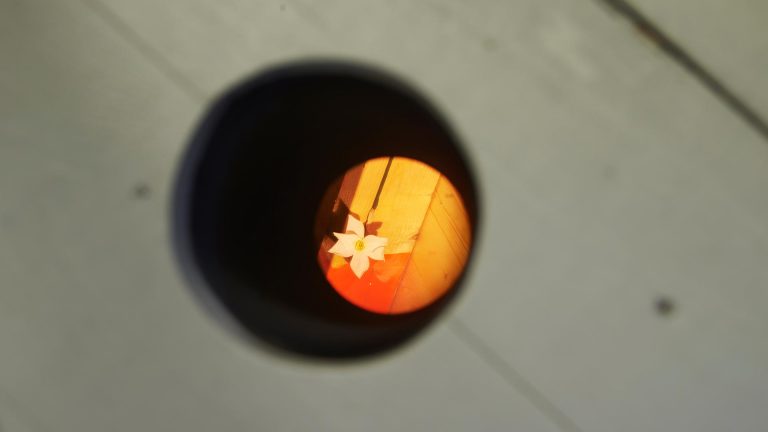Artist: Anne de Vries
Exhibition title: Trance In Amsterdam Returns
Venue: Martin van Zomeren, Amsterdam, The Netherlands
Date: January 18 – February 29, 2020
Photography: all images copyright and courtesy of the artist and Martin van Zomeren, Amsterdam
Prof. Herve This; one of the two inventors who coined the term Molecular Gastronomy in 1988, explains: “..We used to cook with carrots, now we break it down to the molecular elements. Similar to music that already went through this transformation, as we used to make music with flutes and drums, Then we analyzed and synthesized what sounds are made of and can create many new syn-thesized sounds that never existed before..” [1]
‘By 2005 or so, it was becoming clear that electronic music could no longer deliver sounds that were ‘‘futuristic.’’ From the end of World War II up until the 1990s, electronic music—whether produced by high-culture com- posers such as Pierre Schaeffer or Karlheinz Stockhausen or by synthpop groups and dance-music producers—had been synonymous with a sense of the future, so much so that film and television would habitually turn to electronic music when it wanted to invoke the future. But by 2005, electronica was no longer capable of evoking a future that felt strange or dissonant. If elec-tronic music was ‘‘futuristic,’’ it was in the same sense that fonts are ‘‘gothic’’—the futuristic now connoted a settled set of concepts, affects, and associations. Twenty-first-century electronic music had failed to progress beyond what had been recorded in the twentieth century: practically anything produced in the 2000s could have been recorded in the 1990s. Electronic music had succumbed to its own inertia and retro- spection. It was also clear that this was more than a moment in a familiar pattern, in which, as one genre wanes, another emerges to take its place at the leading edge of innovation. There was no leading edge of innovation any more. In music, as elsewhere in culture, we were living, in Franco Berardi’s suggestive phrase, after the future.’ (…) ‘The future is always experi-enced as a haunting: as a virtuality that already impinges on the present, conditioning expectations and motivating cultural production. What hauntological music mourns is less the failure of a future to transpire—the future as actuality—than the disappearance of this effective virtuality.’ [2]
[1 ] Fragment by Prof. Herve This, from Public lecture on Molecular Gastronomy and the Future of Food at NUS Faculty of Science, at Theather 27 in Singapore, June 2018
[2] Excerpt from: Mark Fisher, What is Hauntology? First published in: Film Quarterly, vol. 66, no. 1, pp. 16-24, University of California Press, 2012.
Anne de Vries (1977, The Hague) lives and works in Amsterdam and Berlin. His work has been shown in sev-eral solo exibitions and numerous group exhibitions, such as ‘Hybrid Layers’ at ZKM Karlsruhe (DE), MO-MENTUM 10 Nordic Biennale (NO), ‘Material World’ Nest Den Haag (NL), ‘Submission’ solo at Cell Proj-ects London (UK), ‘Qrowd Qontrol’ solo at Fries Museum Leeuwarden (NL), ‘Back to School’ performance at MoMA PS1, New York (USA), the 9th Berlin Biennale (DE), ‘The Dark Cube’ at Palais de Tokyo (FR), ‘Deep Screen’ Parc Saint Léger (FR) ‘Superficial Hygiene’ at Frans Hals Museum Haarlem (NL), ‘It aint what-cha write, it’s the way atcha write it’ at Manifesta Foundation (NL), ‘Body Language’ Center Culturel Suisse (FR), New Wight Biennale (US), Museum of Applied Arts Frankfurt am Main (DE), Based in Berlin (DE), The Moving Museum (TR), ‘Still/Life’ Three Shadows Museum (CN), ‘Hybrids’ Lustwarande Tilburg (NL), Nuit Blanche 2017 Paris (FR), ‘Wonderlijk Weefsel ‘ at Stedelijk Mu- seum Breda (NL), CCA London (UK), Kunsthal Charlottenborg (DN, Kunst- hal Rotterdam (NL), La Biennale de Lyon Resonance (FR), E_MERGE solo at Foam Museum Amsterdam (NL), Museum Angewandte Kunst Frankfurt am Main (DE), MAMbo Museum, Bologna (IT), Wallris Kunstraum (CH), Salts Basel (CH), Kunstverein Arnsberg (DE), Situations‘ at Winterthur Museum (CH), TruEYE SurView at W139 (NL), among others.






